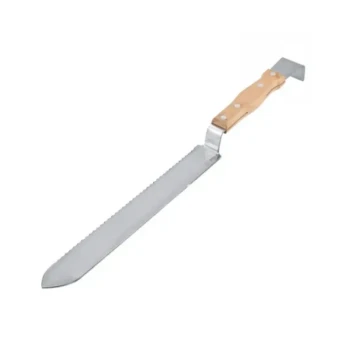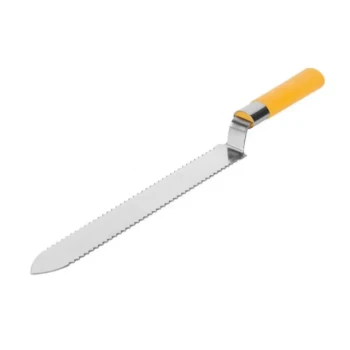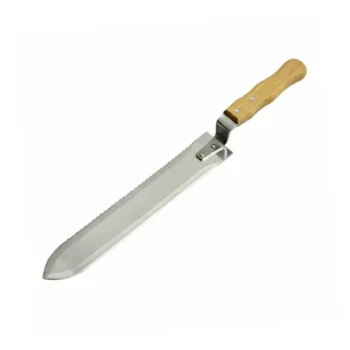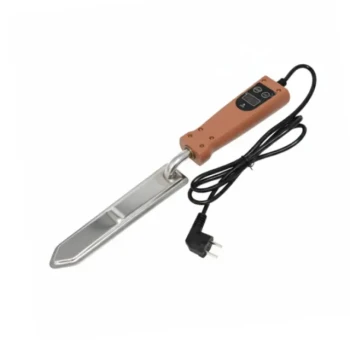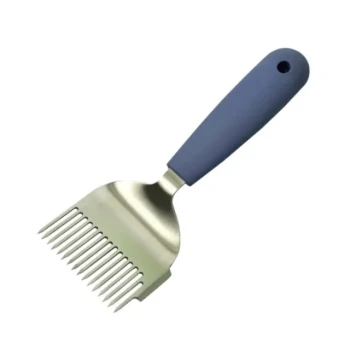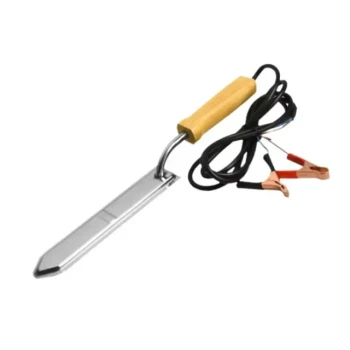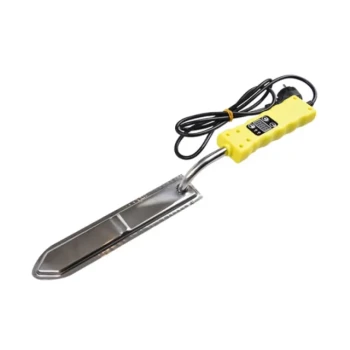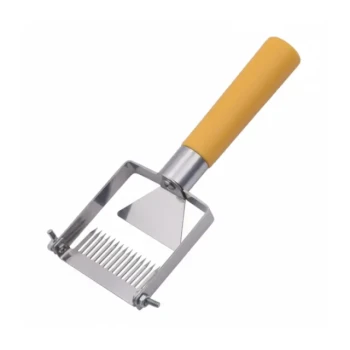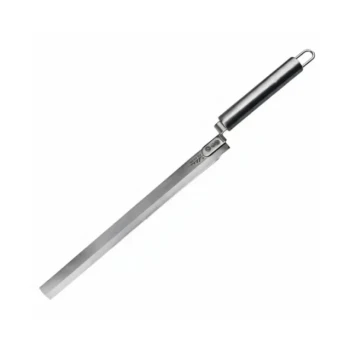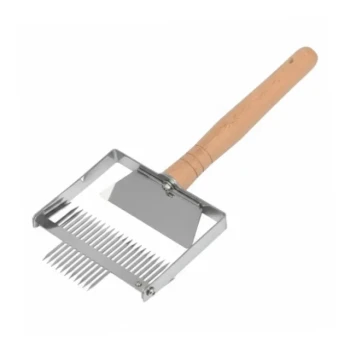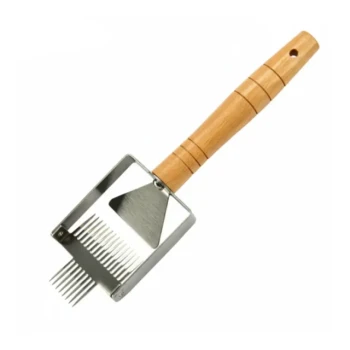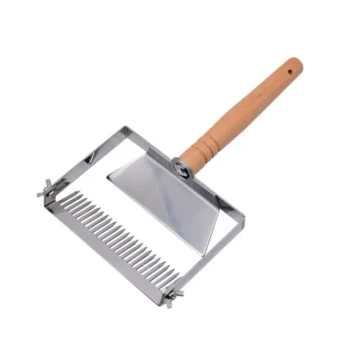At its core, a decapping knife is a specialized tool used by beekeepers to slice the thin layer of beeswax off a honeycomb frame. This process, known as "decapping," is the essential first step in honey harvesting. Removing these wax cappings is necessary to unseal the honey-filled cells so the honey can be removed during extraction.
The real purpose of a decapping knife isn't just to cut wax, but to do so cleanly and efficiently. The quality of your decapping directly impacts the speed of your harvest, the amount of honey you yield, and the integrity of your delicate honeycomb.
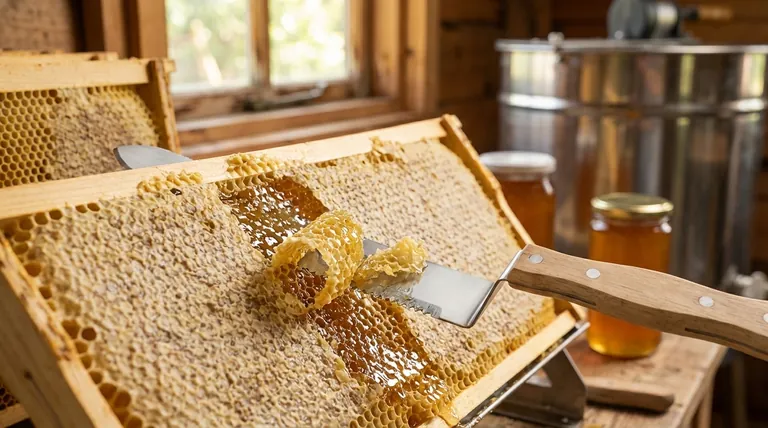
The Critical Role of Decapping
To understand the tool, you must first understand the task. Bees are meticulous architects who seal each cell of honey with a fresh layer of wax, creating an airtight "cap" that preserves the honey and controls its moisture content.
Why Cappings Must Be Removed
These wax cappings form a barrier that locks the honey inside the comb. Before you can use a centrifugal extractor to spin the honey out, you must first break this seal on every single cell.
The Goal: A Clean, Even Cut
The ideal decapping process removes only the raised wax cappings. A clean slice leaves the underlying honeycomb structure intact, allowing the bees to easily repair and reuse the comb, saving them immense time and energy.
Types of Decapping Knives
While the purpose is singular, the tools come in two primary forms, each suited for different scales of operation.
The Cold Knife
A cold knife is the simplest version—a long, often serrated blade with a wooden or plastic handle. It has no internal heating element.
To be effective, a cold knife must be heated by dipping it in a pot of very hot water between passes. Beekeepers often use two, leaving one to heat while the other is in use.
The Electric Knife
An electric decapping knife has a built-in heating element, often controlled by a thermostat. The blade heats up and maintains a consistent temperature, allowing it to slice through wax with minimal effort.
This is the most common and popular choice for hobbyist and sideline beekeepers due to its significant advantage in speed and ease of use.
Understanding the Trade-offs
Choosing between a cold and electric knife involves balancing cost, efficiency, and convenience.
Cold Knives: Simplicity vs. Effort
A cold knife is inexpensive and requires no electricity, making it reliable in any setting. However, the process is significantly slower and more laborious. The blade cools quickly, requiring constant reheating, and can tear the comb if not kept sufficiently hot.
Electric Knives: Efficiency vs. Cost
An electric knife is a larger initial investment and requires a power source. However, the continuous heat allows you to uncap frames much faster and with a cleaner cut, reducing comb damage and fatigue. The primary risk is overheating, which can scorch the honey or damage the knife if not used properly.
Common Alternatives to a Knife
While the decapping knife is a standard, it is not the only tool for the job.
Decapping Forks (Scratchers)
A decapping fork, or scratcher, has a series of sharp tines used to pierce and pull the cappings off. It is excellent for uncapping low or uneven sections of comb that a knife might miss. Some beekeepers with only one or two hives use a fork as their primary tool.
Decapping Rollers
This tool consists of a handle attached to a roller covered in sharp plastic spikes. You simply roll it across the comb to puncture the cappings. It is very fast but can introduce more wax particles into the honey, requiring more thorough filtering later.
Making the Right Choice for Your Goal
Your choice of decapping tool should align directly with the scale of your beekeeping operation and your personal priorities.
- If you are a beginner with only a few hives: A simple cold knife or a decapping fork offers a low-cost, effective entry point into honey harvesting.
- If you are a hobbyist with several hives: An electric decapping knife is the most efficient and effective tool that balances cost and performance for a smooth harvest day.
- If your priority is precision on uneven comb: A decapping fork is an indispensable secondary tool, even if you primarily use an electric knife.
Ultimately, selecting the right decapping tool is a foundational step toward a smooth, rewarding, and successful honey harvest.
Summary Table:
| Feature | Cold Knife | Electric Knife |
|---|---|---|
| Heating Method | Dipped in hot water | Built-in heating element |
| Best For | Beginners, small-scale beekeepers | Hobbyists, sideline beekeepers |
| Pros | Inexpensive, no power needed | Fast, clean cut, less effort |
| Cons | Slower, requires constant reheating | Higher initial cost, needs power |
Ready to streamline your honey harvest?
Whether you're a commercial apiary or a distributor, HONESTBEE supplies the professional-grade beekeeping equipment you need for maximum efficiency and yield. Our selection of reliable decapping knives is designed for heavy-duty use.
Contact us today to discuss your wholesale needs and discover how we can support your operation.
Visual Guide

Related Products
- Professional Z-Shaped Multi-Function Uncapping Knife for Beekeeping
- Serrated Honey Uncapping Knife for Beekeeping and Bee Hive Maintenance
- Electric Heated Honey Uncapping Knife for Beekeeping
- Professional Serrated Double-Sided Uncapping Knife for Beekeeping
- Honeycomb Uncapping Knife for Apiculture
People Also Ask
- What types of uncapping tools are recommended for beekeepers? Optimize Your Honey Harvest with the Right Tools
- What is the overall recommendation for beginner beekeepers regarding uncapping tools? Master Your First Honey Harvest
- What are the essential tools for uncapping honey frames? Choose the Right Tool for Your Apiary
- What is the benefit of the serrated edge on an uncapping knife? Unlock Faster, Cleaner Honey Extraction
- What temperature should a honey knife be? The Key to Clean, Fast Uncapping
